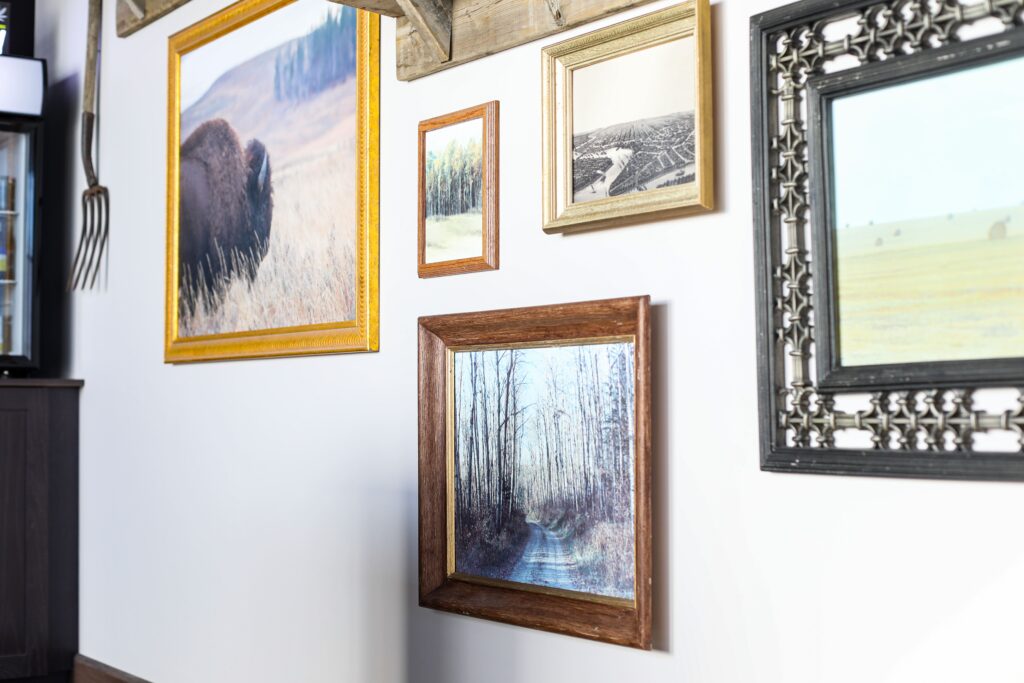16 Dec Why Does Paint Streak?
 After a long day of prepping, painting, and cleaning, you’re ready to admire the finished results. You turn on the lights and take a look—only to find that your walls are covered in streaks! What happened? You thought that you followed every step and took all the precautions, but somehow, your walls turned out less than perfect. Why does paint streak, and how can you prevent it?
After a long day of prepping, painting, and cleaning, you’re ready to admire the finished results. You turn on the lights and take a look—only to find that your walls are covered in streaks! What happened? You thought that you followed every step and took all the precautions, but somehow, your walls turned out less than perfect. Why does paint streak, and how can you prevent it?
The Roller Has Too Much Or Too Little Paint
If your roller isn’t saturated with enough paint, you’ll end up with a holiday—and no, we aren’t talking about the kind you’ve been looking forward to all year. In painting terms, a holiday refers to an uncovered spot on the wall. The material that rollers are made of absorbs a lot of paint; you’ll need to load it up with enough product to achieve your desired result.
When using a roller, you need to be careful with how much pressure you’re applying. Pressing too hard on a wall with a paint-soaked roller will cause it to spill out around the edges, leaving some parts with raised bumps and others with streaks.
There Is Dust On The Walls
Prepping may not have seemed that important when you were eager to get the paint rolling. But if you skip this crucial step, you’ll end up with lacklustre results. Dust will interfere with the paint’s adhesion to the walls and leave you with a streaky mess. The walls should be cleaned and dried before you start painting. To do this, use warm water with dish soap, and go over every centimetre of the painting surface with a washcloth.
The Paint Was Applied In Several Directions
In order for your paint to dry consistently, you need to apply it consistently. If your roller is moving upwards, sideways, and diagonally across the wall, it will show in the brush strokes of the finished result. Paint in one direction to save yourself from streaks.
The Paint Is The Wrong Type Or Poor Quality
The more reflective a paint finish is, the more it will show streaks and imperfections. Flat or semi-gloss paints are best for walls with texture. The paint can streak if it is the wrong type; for example, if you used an oil-based prime coat, but a water-based paint on top, you’ll have issues with adhesion.
Alternatively, paint that’s poorly mixed won’t do you any favours when it comes to creating a streak-free finish. Mix up the paint every 20 or 30 minutes to prevent separation. And when it comes to buying paint, don’t be afraid to pay for quality—after all, your walls are something that you see everyday, so it’s worth spending more to get a better result.
You Went Over Wet Paint
If you start applying the second layer before the first one has dried, you’ll end up smearing the edges and making streaks. As eager as you might be to finish the job, give your walls time to dry completely before adding another coat. Depending on the type of paint you used and the weather conditions of your home, this can take up to 24 hours.
Hire A Professional
Skip the headache of fixing paint streaks and leave the work to a professional instead. At Pinnacle Painting, our Winnipeg painters will give your walls a makeover without leaving any streaks behind. You’ll wonder why you didn’t call us sooner!
